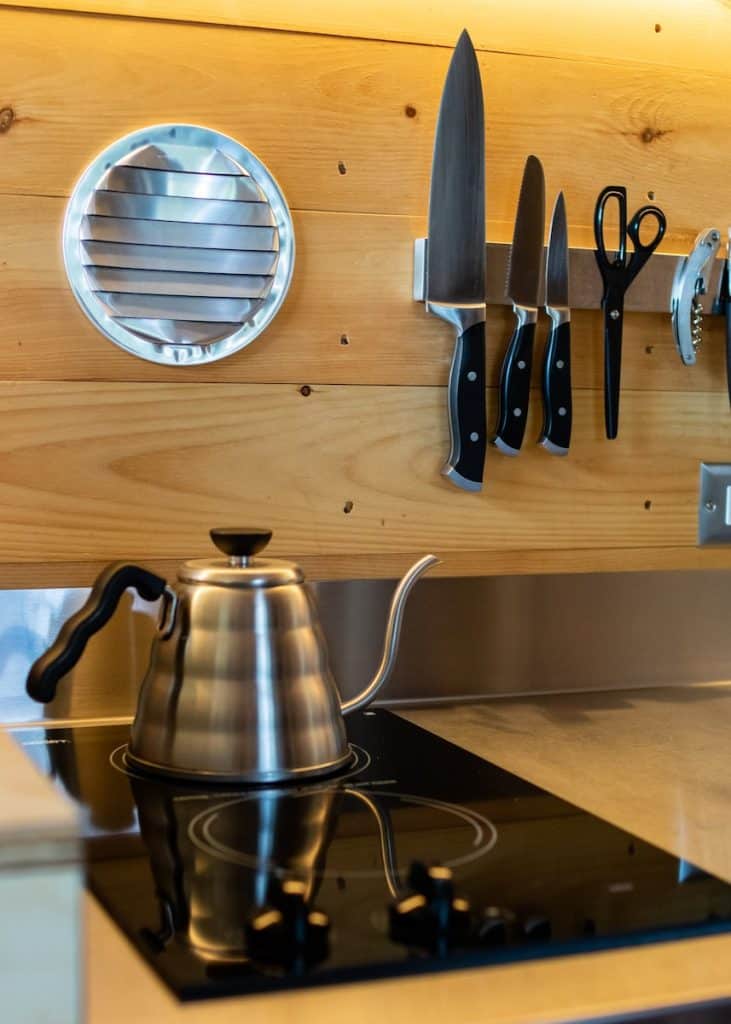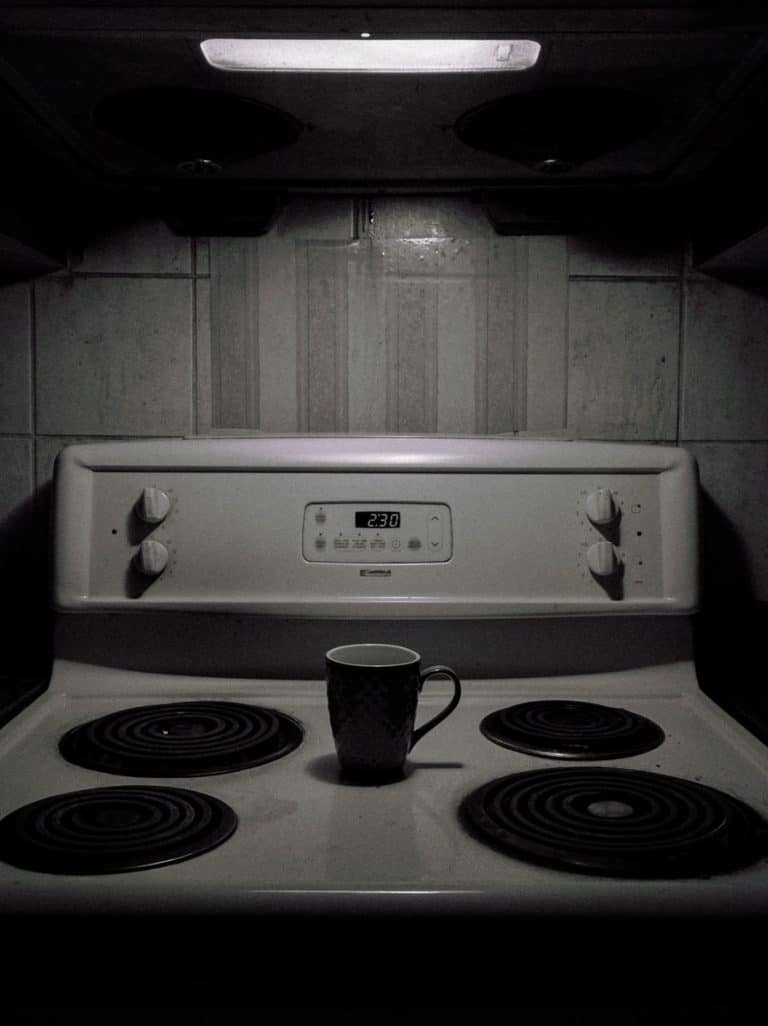The glass-ceramic surface of induction cooktops gets scratched and abraded, as well as spilled on. If we don’t know how to clean induction stove top because we leave it for a long time since we don’t understand how to do it, it won’t work properly because of deposits and stains on top of it.
The presence of a magnetic field as well as heat production might be reduced. Some stains build up on the cooktop’s surface, causing damage. There are several methods for cleaning an induction cooktop expertly. A clean induction cooktop is comparable to a brand-new one in terms of pleasure it provides.
Things To Keep In Mind Before Cleaning the Induction Cooktop
It is also necessary to turn off the induction before cleaning it. It appears harmless, but it could be harmful if you use it while cooking.
To avoid burning yourself, turn off the appliance. It’s better to be safe than sorry if a watch on your wrist or adornments suddenly causes burns.
Allow for the cooling of the induction before beginning the cleaning procedure. Do not use any cleaning chemicals on the hot plate since the fumes might be harmful to human health.
Before putting the cookware on induction, clean the base. To prevent spillage, don’t overfill the pots and pans.

Things Not to Use For Cleaning Induction Hobs
- Steel wool
- Abrasive cloth
- Coarse scrubs
- Knife or sharp tools
- Flammable materials
- Chlorine-based bleaching agents, such as Hypochlorous Acid and Chloramine Bleach as they can stain the cooktop
How to Clean Induction Stove Top
Use a soft cloth or soft sponge and glass cleaner to clean your induction hob since most of them have a glass surface. Wait for the induction cooktop to cool down if there are any spills or food crumbs. Then use a wet cloth or damp sponge to clean it.
Food will not stick to the glass surface if you do this.Later, use a dry towel to wipe off any remaining residue. A small amount of specialized cooktop cleaner cream may also be used.
Using a damp paper towel or a moist cleaning pad, wipe the cream over the surface until it’s clean. Wipe off the moisture with a soft dry cloth/paper towel. It’s a good idea to give the induction cooktop top a quick swipe when it isn’t dirty to keep it clean.
This will guarantee that you do not have to clean after dirt builds up.
Cleaning Dirty Induction Cooktops
If the insides of your induction cooktops are filthy, clean them with a wet cloth. Then use a scraper to gently scrape off the crusty food residue at a 45-degree angle.
When removing sticker residue from glass, ceramic, or other smooth surfaces, don’t apply too much force to prevent scratches. A scraper made of glass and ceramic is the best option. Use white vinegar to remove hard water stains and fingerprints. Rub the area using a cloth soaked in white vinegar.
Wipe the cooktop with a wet paper towel. To remove any residue, clean it with a soft dry cloth followed by a damp cleaning pad rubbing it into the surface. Follow this up with specialist cooktop cleaner cream, which you may apply using an absorbent cleaning pad rub it into the area.
Allow some time for the procedure to complete. Excess liquid should be removed with a dry cloth. One may also use a toothbrush to apply the cream into the glass’s surface.
Use soapy water and a toothbrush or soft cloth for other parts of the induction that aren’t glass-like (such as stainless steel). Cleaner should be non-abrasive and chlorine-free to avoid scratching and corrosion.
Cleaning with Toothpaste
To eliminate the induction, use any ordinary toothpaste at home. Take a generous amount of toothpaste. With broad circles, apply it with your fingers to a larger surface area.
Add a few drops of water to the area and then use a damp cleaning pad or towel to gently clean it. Rub for sometime until the stains go away.
Cleaning with Baking Soda And Soapy Water
This is a simple approach to clean your kitchen. Rinse the dish with hot soapy water and some rags, as shown in the image below. This method uses only cloth rags and heated soapy water.
Soak the rag in scalding hot water for a few moments. Sprinkle a generous amount of baking soda over the induction surface while you’re at it. Squeeze the rags wet but not soggy, then place them on top of the baking soda.
If you leave it for less than 15 minutes and more than 20-30 minutes if the induction is very filthy,
Cleaning with Baking Soda And Vinegar
If cleaning the induction is a challenge, this is another approach that may be used. Make a 50-50 mixture of vinegar and water. Spray or massage it over the induction for a while.
After a while, wipe down the surface with a soft damp cloth and then sprinkle baking soda on top of the vinegar. Allow for 15-20 minutes.
Remove any excess detergent with a clean cleaning scrub, sponge, or damp cloth. Use a soft dry cloth to wipe away the remaining residue.
Cleaning Burnt Residues on Induction Cooktops
Remove the loose residues using a plastic scraper and a wet towel. Check to be sure the induction is cool before removing it from the element, as it may burn polycarbonate. Scrub away any residue with a cleansing cream and scrubbing brush.
If the residue is stubborn, a razor scraper designed for glass can be used. Hold it at a 45-degree angle and scrape gently away with it. Baking soda and vinegar may also be used to remove burnt residue. A scraper, whether plastic or razor, should be applied on top of the mixture.
Cleaning Melted Plastic and Melted Sugar Food
If you’ve been making use of a glass cooktop, you should clean it just as if it was a high-sugar food spillage. The glass surface of the induction cooktop might be irreparably harmed by melted plastic and sugar.
It’s important to use oven mitts to get rid of sweet spills and melted plastic when the induction is hot.
Remove the induction first. Use a razor blade scraper at a 45-degree angle to remove the molten substance with oven mitts on. Allow for cooling before cleaning with cleanser and a soft cleaning pad or towel.
Finally, to avoid scratches and marks, always place the utensils on top of rather than sliding them across the glass. Cast iron pans, copper and aluminum cookware generally leave harsh scratch Marks on the glass surface that are difficult to remove.
Another cause of scratches are rough-edged utensils with rings and ridges on the bottom of the pan. To reduce scuffs and stains, use some white vinegar.
Wipe the surface with a damp cloth and then a dry cotton cloth to remove any leftover residue.
Rub a special induction cleaning cream, such as Aged to Perfection’s “White Carnations,” along with a regular cleaning cloth or soft damp cloth for even better results. Wipe off any remaining residue using a wet paper towel and then a dry one to remove all traces of dirt.
How Does an Induction Cooktop Works?
The heating element in a crockpot is a coil of copper wire that is placed beneath the cooking surface and an alternating electric current is passed through it. This generates a magnetic current throughout the vessel, which converts into heat.
The contents within the vessel are heated through conduction and convection because the heated utensil heats them via conductive and convective means. Because only the element in use beneath the utensil is warm due to heat transferred from it, since an induction does not utilize a conventional exterior heat source,
The cooking vessel for most induction cooktops must be constructed of or contain ferrous metal such as stainless steel or cast iron. The metal in the cooking container focuses the current, which produces heat for the container.
The magnetic field of induction tops is not powerful enough to generate a focused current in copper or aluminum pots, thus they are ineffective. There are also all-metal induction cooktops on the market that use higher frequencies to overcome this limitation.
Any metal utensil may be used on these induction cooktops since they employ extremely high frequencies.
You Might Also Like…

